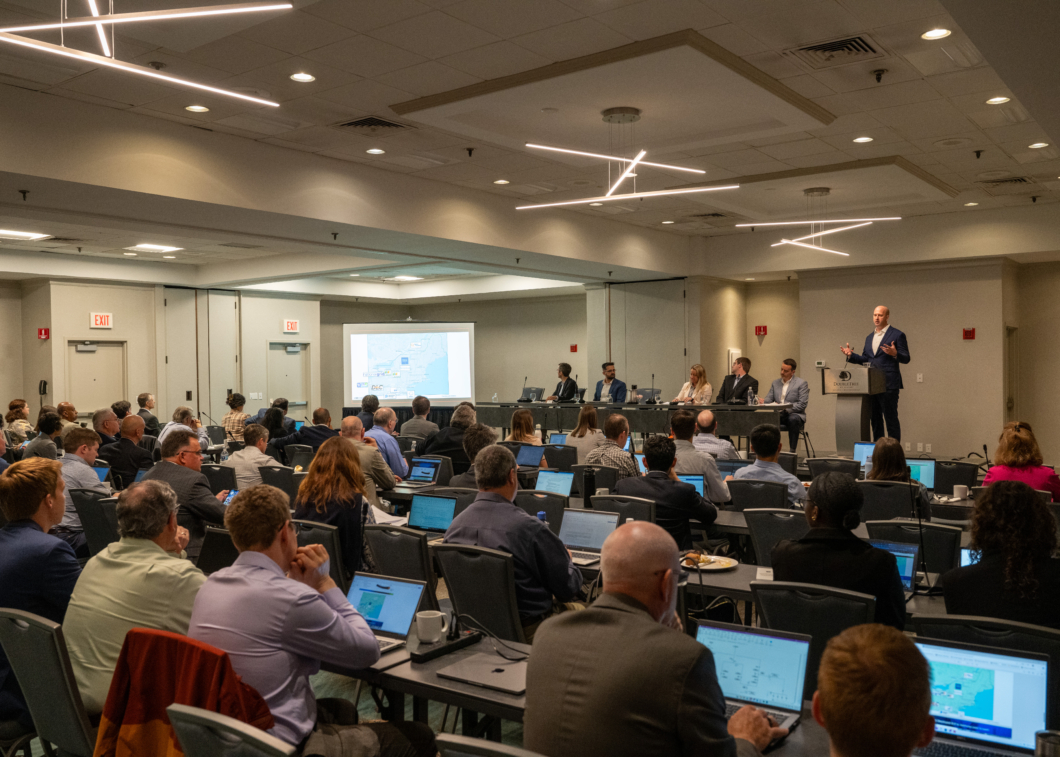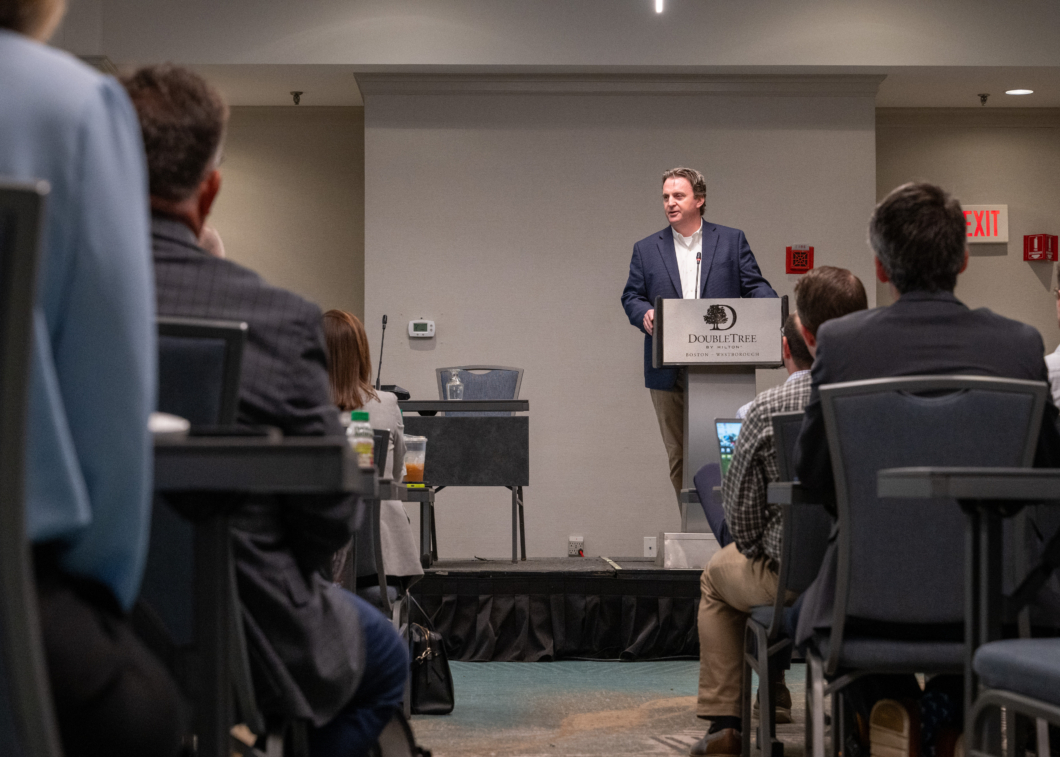Forum examines benefits, tradeoffs of grid-enhancing technologies

ISO New England’s Planning Advisory Committee recently hosted GETs Day, a forum exploring grid-enhancing technologies. Held June 18 in Westborough, Massachusetts, and online, the event drew speakers and participants from utilities, state agencies, equipment manufacturers, and beyond.
The term GETs applies to a wide range of hardware and software intended to make optimal use of the transmission system. GETs have garnered increased attention lately as policymakers and advocates seek ways to keep electricity affordable while facilitating the clean energy transition. With significant growth expected in the region’s transmission needs, GETs offer potential alternatives to traditional infrastructure projects that may face financial, siting, and legal obstacles.

Brent Oberlin, ISO-NE’s executive director of Transmission Planning, said the concepts behind GETs have been around for decades and that New England has been an early adopter of new technologies that support power system efficiency and reliability. As part of its role planning the power system in the most cost-effective manner possible, the ISO is gathering information on the costs and benefits associated with newer forms of GETs.
The forum examined four main kinds of GETs: advanced conductors, dynamic line ratings, power flow controllers, and topology optimization.
Advanced conductors seek to improve the performance of transmission lines by using modern materials in novel configurations. Presenters Jason Huang of TS Conductor and Christian Bilcheck and Dave Townley of CTC Global listed benefits such as increased energy-carrying capability, since advanced conductors are less prone to sag under high temperatures, and decreased energy losses.
Dynamic line ratings allow for different amounts of electricity to flow through conductors depending on ambient conditions. Presenters at the forum discussed various approaches for monitoring conductors’ temperature or factors affecting their temperature, enabling more utilization while guarding against overloads. Eric Rosenberger of Rhode Island Energy discussed parent company PPL’s deployment of dynamic line ratings in Pennsylvania. He said it addressed localized transmission congestion, but noted that dynamic line ratings may not be appropriate everywhere on the system or in long-term planning.
Unlike traditional circuit breakers, which must be either open or closed, power flow controllers can be tuned to allow different amounts of electricity to flow at different times. Joaquin Peirano of Smart Wires likened them to a water valve. Zakia El Omari of Vermont Electric Power Company outlined a proposal to use a power flow controller to improve the ability to regulate flow on a tie line to New York.
Topology optimization uses software to help system operators determine the most efficient way to configure the transmission system from moment to moment. Pablo A. Ruiz of NewGrid described it as “Google Maps or Waze for the transmission grid”—a way to identify the most direct route for electricity to take through the system.
Presentation slides from the forum are available on the ISO New England website.

- Categories
- Events
- Tags
- planning advisory committee, system planning, transmission
